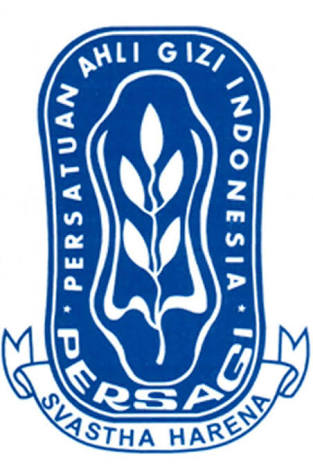Relationship of Household Income, Age During Pregnancy and Low Birth Weight (LBW)
Abstract
Low birth weight (LBW) is still a major problem in developing countries including Indonesia. The prevalence of LBW tends to decrease from 2013-2018, from 8.6% to 6.51%. Therefore, it is necessary to analyze the relationship between maternal age at pregnancy and household income with the incidence of low birth weight. The type of the study was analytic observational with quantitative method. The population in this study were all mothers who had children aged 6-24 months who resided in West Aceh District and met the inclusion and exclusion criteria by means of simple random sampling. The dependent variable of this study was LB W while the independent variables were maternal age during pregnancy and family income. The risk tendency for each variable was seen using the OR (odds ratio) value which used a Confidence Interval of 95%. The results showed that there was a significant relationship (p=0.049) between the two variables. The amount of household income influences the quality of the mother's health and nutrition intake during pregnancy impacts the weight and health of the child born.
Full Text:
PDFReferences
Aras, R.Y. (2013). Is maternal age risk factor for low birth weight.Archieve of medicine and health science, [e-journal] 1(1), pp. 33–37. Diakses dari: .
Badan Koordinasi Keluarga Berencana Nasional. (2007). Hindari kehamilan 4 terlalu. [pdf] Direktorat Kelangsungan Hidup Ibu, Bayi dan Anak. Tersedia di: www.nad.bkkbn.go.id/data/Documents/4%20terlalu.pdf>.
Cassandra M. Gibbs, Amanda Wendt, Stacey Peters, Carol J. Hogue. (2012) The Impact of Early Age at First Childbirth on Maternal and Infant Health. Paediatric and Perinatal Epidemiology.
Dinas Kesehatan Aceh Barat. (2022). Laporan Tahunan. Angka BBLR Kabupaten Aceh barat.
Fajriana, A. and Buanasita, A., (2018). Faktorrisiko yang berhubungan dengan kejadian bayi berat lahir rendah di kecamatan semampir surabaya. Media Gizi Indonesia, 13(1), p.71.
Halu, S.A.N., (2019). Hubungan Status Sosio Ekonomi Ibu Dengan Kejadian Berat Badan Lahir Rendah Di PuskesmasLa’o. Wawasan Kesehatan, 4(2), pp.74-80.
Jayanti, F.A., Dharmawan, Y. and Aruben, R., (2017). Faktor-faktor yang berhubungan dengan kejadian berat badan lahir rendah di wilayah kerja puskesmas bangetayu kota Semarang tahun 2016. Jurnal Kesehatan Masyarakat, 5(4), pp.812-822.
Kementerian Kesehatan Badan Penelitian dan Pengembangan Kesehatan. (2018). Hasil Utama Riset Kesehatan Dasar 2018. Kementerian Kesehatan RI.
Kementerian Kesehatan Republik Indonesia. (2016). Buku kesehatan ibu dan anak. Jakarta:Pusat Data dan Informasi Kesehatan.
Kemenkes, R. I. (2014). Infodatin pusat data dan informasi kementerian kesehatan RI. Kemenkes Ri, 109(1), 1-8.
Lapau, B. (2015). Metodologi penelitian kebidanan.Jakarta: Pustaka Obor Indonesia.
Manuaba, I.B. (2010). Ilmu kebidanan, penyakit kandungan dan keluarga berencana untuk pendidikan bidan. Jakarta: Penerbit Buku Kedokteran EGC.
Momeni M, Danaei M, Kermani AJ, Bakhshandeh M, Foroodnia S, Mahmoudabadi Z. (2017) Prevalence and riskfactors of low birth weight in the Southeast of Iran. Int J Prev Med 8:12.
Nurahmawati, D., Salimo, H, & Dewi, Y. L.R (2017). Effects of maternal education, psychosocial stress, nutritional status at pregnancy, and family income, on birthweight in Nganjuk, East Java. J Matern Child Heal, 2(04), 324-34
Pinontoan VM, Tombokan SGJ. (2013) Hubungan Umur dan Paritas Ibu dengan Kejadian Bayi Berat Lahir Rendah. (2):20-25.
Rahman, M. S., Howlader, T., Masud, M. S., & Rahman, M. L. (2016). Association of low-birth weight with malnutrition in children under five years in Bangladesh: do mother’s education, socio-economic status, and birth interval matter? PloS one, 11(6), e0157814.
Smitten, J. (2011). Approach to the child with IUGR/SGA. [online] Diakses dari: .
UNICEF. (2008). Global Database on Low Birthweight.
WHO. (2016). Low Birth Weight Policy Brief, www.who.int. Diakses tanggal 6 Maret 2023
Widiyastuti, P. (2009). Faktor-Faktor Risiko Ibu Hamil yang Berhubungan dengan Kejadian BBLR Studi Kasus di Wilayah Kerja Puskesmas Ampel 1 Boyolali Tahun 2008 (Unpublished undergraduate thesis). Universitas Negeri Semarang
DOI: https://doi.org/10.35308/jns.v4i1.7401
Refbacks
- There are currently no refbacks.
Managed by Department of Nutrition, Faculty of Public Health
Published by Universitas Teuku Umar ,
Website: http://jurnal.utu.ac.id/JNS/index
Email: jns@utu.ac.id
Phone/Fax: +62-852-7736-5563; E-mail:
This work is licensed under a Creative Commons Attribution-ShareAlike 4.0 International License.














